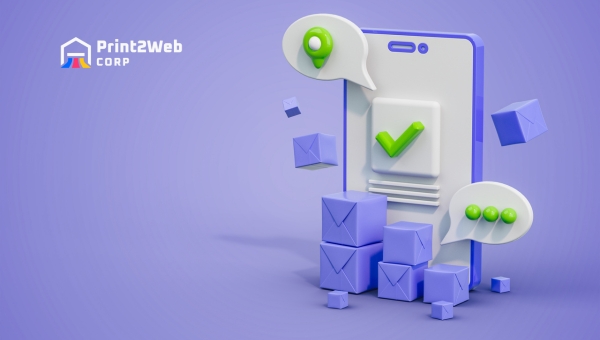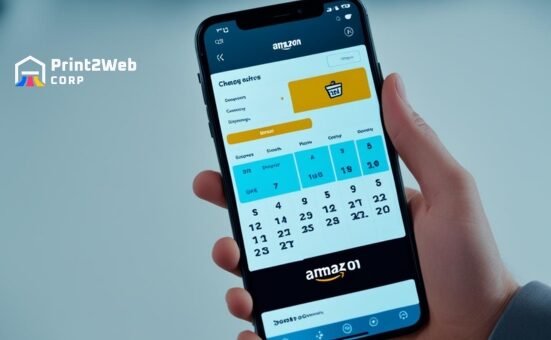Have you ever wondered why some businesses seem to have something for everyone? Let’s dive into the heart of business success – What Is A Product Line – and uncover its role in creating a thriving brand. Whether you’re a small shop owner or the head of a growing enterprise, understanding product lines could be your golden ticket to soaring sales.
Think about walking into your favorite store. You’ll likely see various versions of the same type of item, each with its unique features and reasons to buy. This variety captures different tastes and budgets; that’s what we mean by a product line. It refers to a group of related products under one brand that are marketed together and cater to a similar need or desire but with slight variations.
What You Will Discover From Reading This
- Learn how every great brand builds its empire
- Uncover simple strategies for exceptional business growth
- See real-world examples from top brands like Nike and Microsoft
- Get insights on managing products that customers love
- Explore the secret behind aligning products with market demands
What Is a Product Line?
A product line refers to a group of related products that a company offers under a single brand. These products share certain characteristics, functionalities, or are targeted towards a specific market segment. Companies develop product lines as a strategy to cater to different consumer needs while maintaining the brand identity. This approach allows for variations in price, quality, and features within the same category to attract diverse consumer preferences.

Product lines are dynamic and evolve according to market trends, technology advancements, and consumer feedback. They enable companies to expand their market reach by introducing new variants or enhancing existing products. By managing a product line effectively, businesses can capitalize on brand loyalty and cross-selling opportunities, ultimately fostering growth and competitiveness in the market.
The Role Of Product Lines in Business Growth
Product lines play an integral part in business expansion dynamics and pave ways to reach untapped markets:
- Diversification: With diverse offerings under its belt, a business can cater to varying consumer demands, which may be driven by seasons, trends, or even simply personal preferences
- Market Expansion: New additions to existing lines often enable the business to enter new territories or niches by satisfying unique customer needs.
- Revenue Streams: The more products offered, the more avenues open up for generating revenue, thereby bolstering financial fitness.
- Branding Possibilities: Over time, differentiated yet unified offerings help cement brand identity, which can bolster market standing and customer loyalty.
Through careful planning, development, and management of product lines, businesses aren’t just selling a single product; they are offering solutions to their customer’s needs. This approach fosters long-term relationships and converts one-time buyers into loyal customers.
Also Read: What is Dropshipping? Simplifying E-commerce Logistics
The Anatomy of a Successful Product Line
Before we dive deep into the world of product lines, it’s necessary to identify what sets successful ones apart. With a keen understanding of these traits, businesses can build and manage efficient product lines that add weight to their portfolio.

Key Characteristics
When I look at successful product lines, a few characteristics always shine. These elements can turn an ordinary line into a powerhouse for growth and connectivity with the customers.
- Balance: A great product line represents a fine balance between diversity and cohesion. It must meet several customer needs while maintaining an underlying consistency.
- Adaptability: Effective product lines anticipate market changes and adapt accordingly. They evolve while keeping their core value intact.
- Customer-centric Design: The design of the products within the line should cater to customer needs and preferences primarily.
- Differentiation Within Consistency: Each offering in the line should stand out on its own but also tie together as part of the overall brand image.
How Do They Contribute to Business Success?
An intriguing question often crosses my mind: ‘What makes these traits so vital?’ Well, they directly fuel business success in multiple ways:
- Building Brand Recognition: With a recognizable and coherent set of offerings, businesses can boost their identity and foster loyalty among customers.
- Amplifying Revenue Streams: Diversified yet cohesive products allow companies to tap into different segments simultaneously without exhausting resources on new branding or promotional tactics each time.
- Fostering Innovation: When existing offerings reflect innovative design or technology, it paves the way for future creativity that builds upon these features.
Remembering ‘what a product line’ means more than recognizing it enhances sales; it’s about acknowledging its role as an engine powering business growth! Reading about this topic helps me appreciate how much planning goes behind every shelf I browse through – whether virtual or physical.
Different Types of Product Lines
Product lines refer to a collection of related products under a single brand offered by a company. These groups of products are closely linked either through functionality, target market, price range, or all three, creating synergies and efficiencies in production and marketing.

Diversifying product offerings allows businesses to capture a broader market segment and cater to varying consumer needs and preferences. Here’s an overview of distinct types of product lines:
- Consumer Goods: Aimed directly at the end user for personal use. This category can be further divided into:
- Convenience Products: Everyday items that require minimal shopping effort (e.g., bread, milk).
- Shopping Products: Purchased less frequently with more thought and planning involved (e.g., clothing, electronics).
- Specialty Products: Unique items for which consumers are willing to make a special purchasing effort (e.g., luxury cars, high-end electronics).
- Industrial Goods: Products designed specifically for manufacturing and business operations rather than for personal use or consumption. Examples include:
- Raw Materials: Basic goods that are processed or used in manufacturing (e.g., lumber, iron ore).
- Capital Goods: Long-lasting goods that facilitate developing or managing the finished product (e.g., machinery, equipment).
- Services: Intangible products that involve tasks performed by people or machines. Examples include:
- Professional Services: Require specialized training or expertise like medical care or legal counseling.
- Financial Services: Related to the management of money such as banking services, and insurance policies.
- Convenience Food Line: Aimed at reducing consumer’s cooking time; includes prepared meals, canned foods, and snacks.
- Healthcare and Beauty Line: Covers everything from pharmaceuticals to cosmetics aimed at enhancing wellbeing.
Understanding these different types of product lines helps companies strategize their product development, and marketing efforts efficiently catering to the right audience with tailored offerings that meet specific needs and demand patterns within various segments shows how products grouped together can target multiple segments effectively, enhancing overall brand value.
Also Read: How to Freelance as a Student? – Insider Tips for Success
What Is Involved in Managing a Product Line?
When we delve deeper into the realm of product lines, there’s an all-important aspect to consider: Product Line Management.

Are you wondering what “Managing a Product Line” means? Let’s break it down bit by bit.
- Planning: One of the most critical components of product line management is planning. This step involves analyzing market trends, identifying customer needs, and laying out a roadmap regarding when and how to launch new products or variants within the product line.
- Development: This step involves designing, manufacturing, testing, and improving products before they reach customers.
- Launching: A lot of meticulous planning goes into launching a new product or variant in the market. The right timing, promotional strategies, distribution channels – everything must be strategized suitably.
- Managing Lifecycle: From initiation to growth, maturity to decline – every stage in a product’s life cycle needs specific strategic inputs that are crucial for managing the whole product line effectively.
All these constitute integral parts of an extensive process called Product Line Management. It might appear overwhelming initially, considering how detailed each point is. However, those details are vital for understanding how businesses succeed by meticulously managing their entire carousel of goods.
Some Examples of Product Lines
A product line refers to a collection of related products that are offered by the same brand or company, typically distinguished from each other by function, target audience, pricing, or other attributes. Companies often expand their offerings through product lines to cater to different customer needs and preferences while maximizing market coverage and leveraging brand strength across multiple categories. Here are some notable examples:
- Apple’s iPhone Series: Apple has developed a wide array of iPhones over the years, with each new model showcasing advancements in technology, design variations, and improved functionalities aimed at different market segments.
- Coca-Cola’s Beverage Varieties: The Coca-Cola Company offers an extensive product line that includes sparkling sodas (Coca-Cola Classic, Diet Coke), water (Dasani), sports drinks (Powerade), and juices (Minute Maid), catering to diverse tastes and hydration needs.
- Nike’s Athletic Footwear: Nike’s footwear line spans various sports and activities—including running, basketball, soccer, and lifestyle sneakers—each designed with specific features like cushioning technologies and durability for targeted performance benefits.
- Procter & Gamble’s Home Care Products: P&G boasts a broad spectrum of home care items under brands like Tide (laundry detergents), Dawn (dishwashing liquids), and Swiffer (cleaning systems), providing solutions for a wide range of household cleaning tasks.
These examples illustrate how different industries utilize product lines to address the various demands of their consumer base while efficiently managing branding and production processes within overarching company strategies.
Also Read: How to Delete a Shopify Account & Cancel a Subscription?
FAQs
What are the elements of a product line?
The elements of a product line include different products that are closely linked to each other – by function, target market, price range, or quality. These elements work together to satisfy customer needs and follow a specific marketing strategy.
What is my product line?
Your product line refers to the group of products you offer that serve similar purposes, cater to the same market segment, or fall within the same price bracket. It’s essentially what your business is known for selling.
Why is product line important?
A product line is important because it allows businesses to diversify offerings and meet more customer needs. This can lead to increased sales, better brand recognition, and a stronger competitive position in the market.
What is a full line of products?
A full line of products means offering a complete range of items under one category. For example, if you sell clothing, your full product line would include various types, such as tops, pants, and dresses in many sizes and styles.
Also Read: How to Promote Your Shopify Store: Expert Tips & Strategies
Conclusion
When I think about what a product line is, it’s clear that understanding this concept is essential for any business looking to grow. A well-managed product line can introduce new customers to a brand, provide diverse options to meet various needs, and help a company become more resilient in the face of change.
It involves strategic planning and an alignment with market demands. By looking at giants like Nike or Microsoft, we see that no matter the industry, successful product line management can make all the difference. It’s not just about having multiple products; it’s about creating a cohesive family of offerings that support each other and push the business forward.







